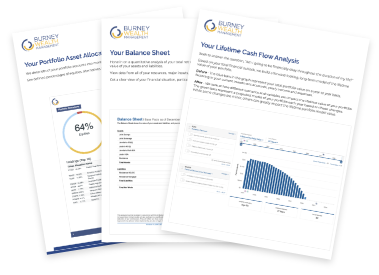Fixed Income: Navigating a New Environment

Since the beginning of the Fed’s latest rate hiking cycle in March of 2022, investors have been experiencing an environment in Fixed Income unlike any they have otherwise lived through in the previous 10+ years.
The Fed’s fight against inflation resulted in it increasing its benchmark short-term interest rate, the Federal Funds rate, at a rapid pace of a 5.25% rise in just over 16 months. As a key component in any Fixed Income investment decision and with a direct impact on Fixed Income markets in general, these material changes in short-term rates created an environment where investors could have found themselves flat-footed and with lags in the overall and after-tax returns of their Fixed Income allocations.
To be fair, predicting the path of inflation and the Fed’s response to it ahead of time is a challenging endeavor, however there were proactive steps investors could have taken throughout this period of rising interest rates, as well as those investors can take now to take advantage of what lies ahead in Fixed Income.
Here is how we have been helping our clients navigate a new environment in Fixed Income.
A Historic Opportunity in Bonds
Investors typically consider the bond piece of their portfolio to be more stable than the stocks piece as in any given year, individual stocks can experience declines of 10% or more while the potential drawdown for many traditional bond investments tends to be smaller over the same timeframe. As a result, when it comes to tax loss harvesting in a portfolio (tax loss harvesting being the act of selling positions at a loss to realize capital losses that can be used to offset realized capital gains), there tends to be a greater prevalence of tax loss harvesting opportunities in individual stocks than in bonds.
Throughout history, there have been some opportunities to use this same tax loss harvesting tactic in bonds, most of the time in only a minor way as the losses in bonds during these drawdown periods was still muted relative to the typical tax loss harvesting opportunity available with individual stocks.
2022 however, provided not only an opportunity to tax loss harvest bonds, it in fact provided investors with the biggest opportunity ever to tax loss harvest within Fixed Income going back to 1926, with the drawdown in intermediate-term bonds reaching -17.4% or almost double the previous maximum drawdown in intermediate-term bonds of -8.9%.
And so, upon identifying this opportunity in the midst of the 2022 bond market selloff, we made the decision to tax loss harvest clients’ intermediate-term bond holdings and replace them with similar high-quality intermediate-term bonds to realize the losses present in bonds and lower clients’ 2022 tax bills.
Tackling the Inverted Yield Curve
By the beginning of 2023, the yield curve had been inverted such that bonds of shorter duration were now paying higher yields relative to their longer duration counterparts. This is not the norm as typically, a bond investor should earn a higher rate of interest on their principal for locking up that principal for a longer period of time. When the yield curve inverts the opposite relationship is true, as bond investors earn higher yields for investing their capital for a shorter amount of time than they otherwise would when investing it longer term.
The shape of the yield curve has relevant implications for bond investors and during this latest episode of a yield curve inversion, the Fed brought short-term rates to over 5% creating an environment where bond investors could earn a meaningful rate of return for taking on a minimal amount of duration risk.
Risks remained on the short end of the curve in the form of reinvestment risk, as yields are quoted as an annualized rate and are only achieved if an investor can reinvest their cash at similarly high rates when their bonds mature. But, with the Fed Funds rate at 4.5% and sitting close to 1% above intermediate-term rates at the end of January 2023, the availability of good yields on short-duration bonds presented an attractive opportunity even after accounting for reinvestment risk.
It is for these reasons at this point, we sold out of all intermediate-term bonds in clients’ Fixed Income allocations and shifted their Fixed Income piece to 100% short-term bonds.
Within this short-term allocation, we maintained some exposure to investment-grade corporate bonds while, in our final step of going short-term, also allocating to risk-free 6-month US T-bills to take advantage of the attractive yields on T-bills. And as we can see looking back now, a 100% short-term bond allocation added value on both the better yield and lower duration fronts over this timeframe, as intermediate-term bonds experienced further declines through October 2023.
Positioning for a Potential End to the Fed's Rate Hiking Cycle
The move to a 100% short-term bond allocation within Fixed Income was prudent at a time when the Fed had brought short-term rates to their peak and looked poised to be cautious about moving those rates up or down in the short run. As we have highlighted above, though, by going 100% short-term investors take on the reinvestment risk that rates will come down at some point before their bonds mature thereby forcing them to roll into bonds with lower yields than were available previously.
This appears to be a likely event at some point in the near term as the Fed looks to have won its battle against inflation and as a result, has much of the justification it has been looking for to hold off on future rate hikes. What’s more, with both the market projecting rate cuts by the end of 2024 and the potential for a resilient US economy ahead, the Fed’s proverbial “soft landing” appears possibly within reach. This in turn has spurred a rise in intermediate-term yields and a beginning to the process of un-inverting the yield curve.
What this means is that while earlier this year investors had the opportunity to obtain good yields at the short end of the yield curve but needed to take on reinvestment risk to do so, they can now extend duration to lock in similarly attractive yields for longer. Additionally, intermediate-term investment-grade bonds tend to outperform T-bills in the 1-2 years following rate hiking cycles on average, further supporting the case that now is a good time to increase duration in the Fixed Income piece of a portfolio.
Based on these factors, we are now doing just that with our clients’ Fixed Income allocations. Starting at the end of October of this year, we began shifting from a tactical allocation to 100% short-term bonds back to a more strategic 70% intermediate-term bond, 30% short-term bond allocation.
Additionally, we are also moving from allocating specifically to US Treasuries back to investing clients in a diversified allocation to investment-grade government and corporate bonds. The end result is that clients will once again be invested in a Fixed Income mix that includes intermediate-term bonds.
And so far, a move in October back to owning intermediate-term bonds has proved timely as intermediate-term bonds have begun to outperform short-term bonds over the past six weeks resulting in an opportunity we helped clients take advantage of.
Charting a Course Ahead in Fixed Income
The past two years have ushered in a new environment in Fixed Income. With a rapid rate hiking cycle beginning in March of 2022, a period of sustained yield curve inversion from the later part of 2022 through to now, and the potential for short-term rate cuts and a more normalized yield curve with higher intermediate-term rates in 2024, there have been many changing dynamics in Fixed Income to navigate over the past 18 months.
Investors who left their Fixed Income allocations unwatched and remained passive throughout this timeframe could have initially found themselves caught off guard with their positioning in Fixed Income and ultimately, with lower overall and after-tax Fixed Income returns as a result.
We at Burney Wealth Management helped guide clients through this period by proactively adjusting their Fixed Income allocations, and we continue to do so looking ahead as well.
Reach out to us for a complimentary analysis of your Fixed Income portfolio and to learn how we can help you be proactive in Fixed Income.
The Burney Company is an SEC-registered investment adviser. Burney Wealth Management is a division of the Burney Company. Registration with the SEC or any state securities authority does not imply that Burney Company or any of its principals or employees possesses a particular level of skill or training in the investment advisory business or any other business. Burney Company does not provide legal, tax, or accounting advice, but offers it through third parties. Before making any financial decisions, clients should consult their legal and/or tax advisors.




